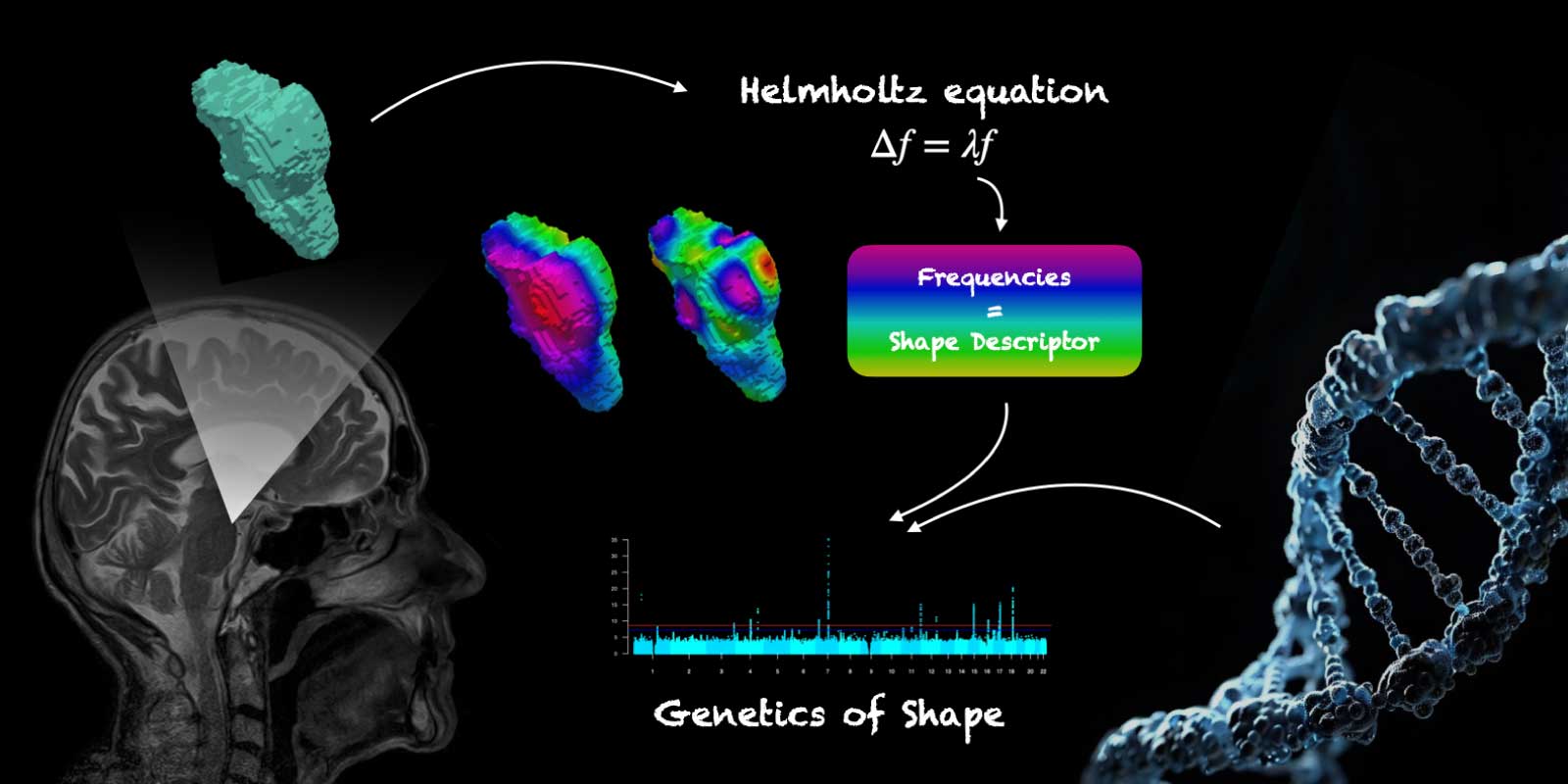Published on 16.06.2025
Genetics of Brain Shape: New Study Looks Beyond Size

A new study by researchers in the Helmholtz Imaging Projects BrainShapes and Neuroimaging Biomarkers for Restless Leg Syndrome (short: NImRLS) uncovers a deeper genetic influence on the brain, not in how big it is, but in its shape.
In the paper “Beyond Volume: Unraveling the Genetics of Human Brain Geometry”, the team analyzed brain scans and genetic data from nearly 20,000 healthy individuals in the UK Biobank. Rather than looking at brain volume or surface area, which are standard in neuroimaging studies, they explored the geometry of 22 brain structures, including subcortical regions like the hippocampus and amygdala, the cerebellum and brainstem.
To quantify shape, the researchers used a mathematical method called the Laplace-Beltrami operator, which allows to capture an object’s geometry in a sequence of numbers. Those numbers were then tested for association with DNA variation. Significant associations indicated DNA positions that influence the shape of brain structures.
Key Findings
- Genetic influence on brain shape: 80 genetic locations in the genome (so-called loci) were significantly associated with brain shape, independent of size or surface area.
- Brainstem notably affected: The brainstem showed the strongest genetic signals, with 37 shape-related loci identified.
- Links to health conditions: Several of these loci overlap with known associations for blood pressure, neurodegeneration, alcohol consumption, and mental health traits, suggesting that changes in brain shape might serve as early indicators – or biomarkers – of these conditions.
- Polygenic risk correlations: The study also found correlations between brain shape and polygenic risk scores for hypertension, ischemic stroke, and schizophrenia. This implies that individuals with higher genetic risk for these conditions may exhibit distinct brain shape patterns.
Why It Matters
This research demonstrates that our genes don’t just influence how large or small brain structures are. They also likely affect their form in biologically meaningful ways. Subtle variations in shape may act as early indicators of complex health conditions, offering potential new biomarkers for research and diagnostics.
By moving beyond conventional brain metrics and connecting geometry with genetics, the study opens new avenues for understanding brain development, and early disease detection.
About the Helmholtz Imaging Projects BrainShapes & NImRLS
The study is part of the Helmholtz Imaging Projects BrainShapes and NlmRLS.
BrainShapes investigates the 3D architecture of the human brain using MRI data and the Laplace-Beltrami Operator (LBO) to analyze its geometric features. Machine learning helps link individual brain structures to specific characteristics. Deep Neural Networks are used to reconstruct 3D structures from the LBO spectrum, followed by a Genome-Wide Association Study on reconstruction errors to identify genetic influences. The project advances our understanding of brain shape variability and its relation to individual differences.
Neuroimaging Biomarkers for Restless Leg Syndrome (short: NImRLS) develops scalable and interpretable machine learning approaches for large-scale neuroimaging datasets. NlmRLS aims to make sense of complex biomedical data by linking brain imaging with genetic and clinical information. By tackling disorders such as restless leg syndrome and beyond, NImRLS provides powerful tools for modern health research and exemplifies Helmholtz Imaging’s mission to unlock the potential of imaging and enable the delivery of generalizable imaging solutions.
Links
Paper “Beyond Volume: Unraveling the Genetics of Human Brain Geometry”
Helmholtz Imaging Project BrainShapes
Helmholtz Imaging Project NImRLS